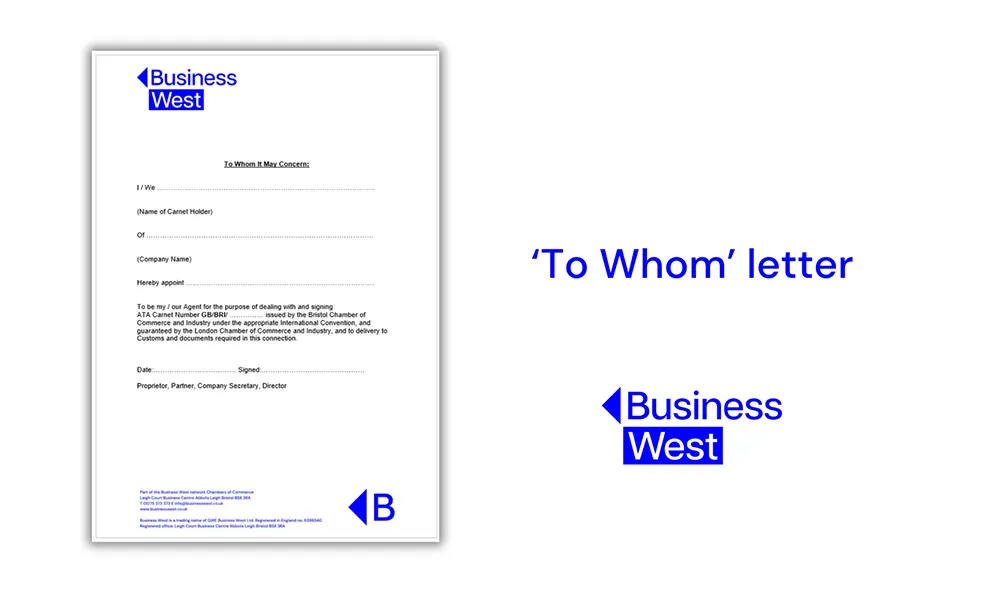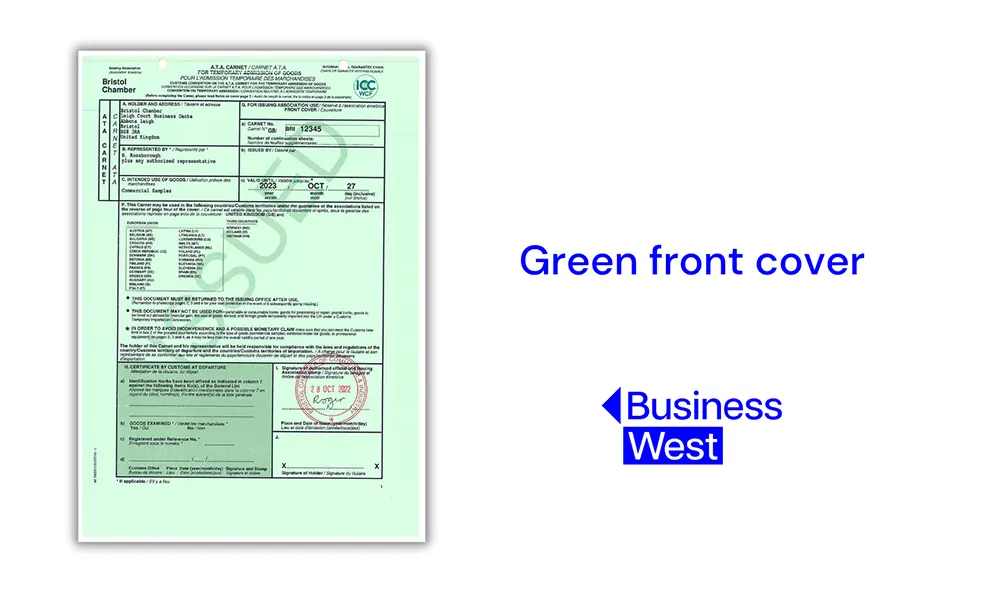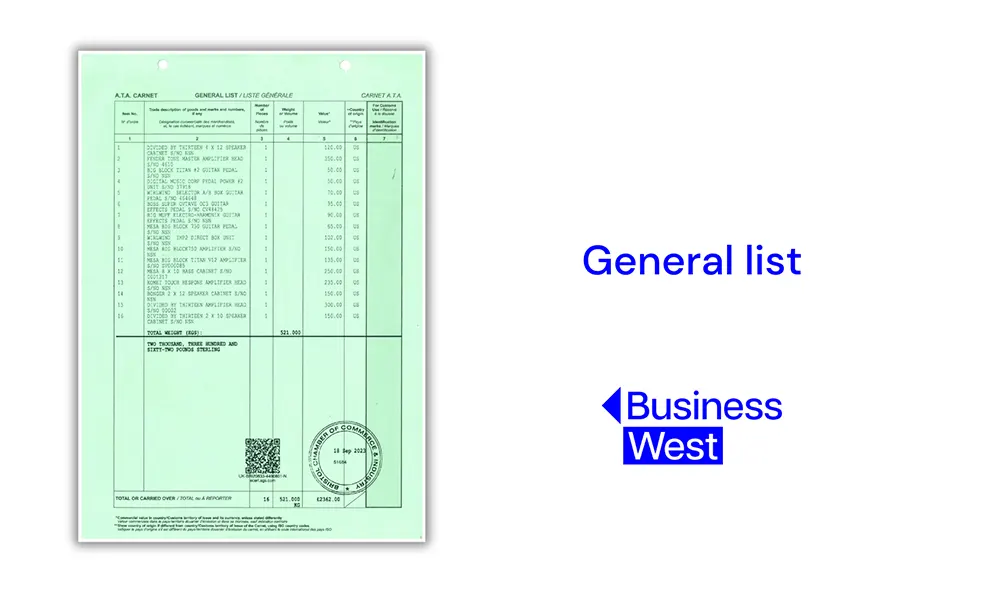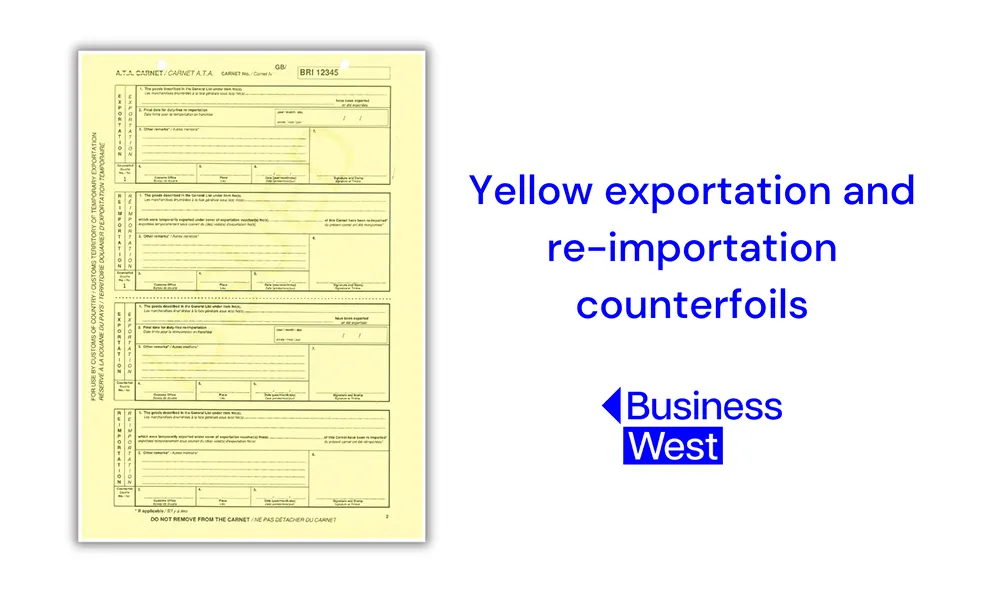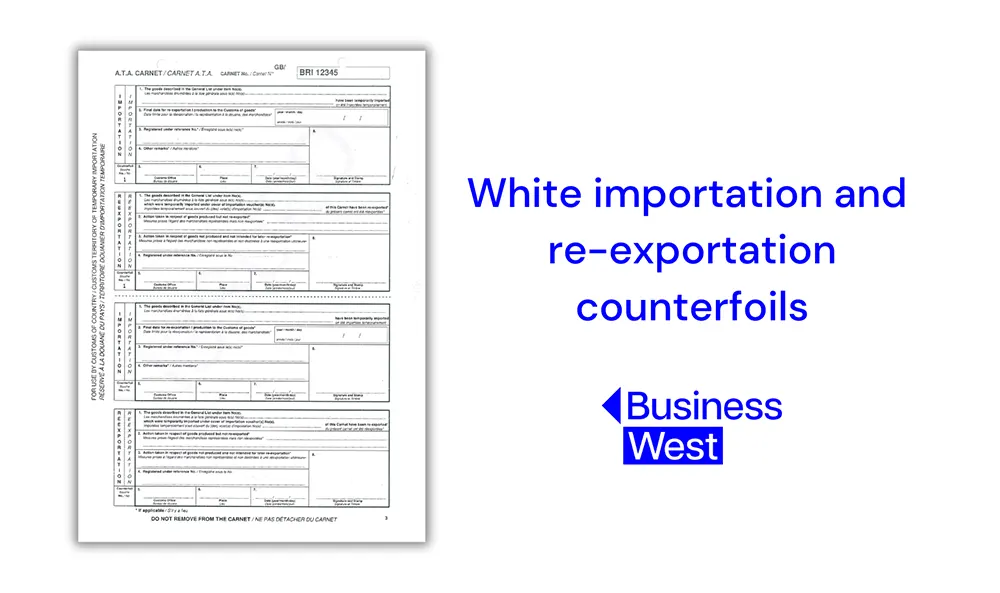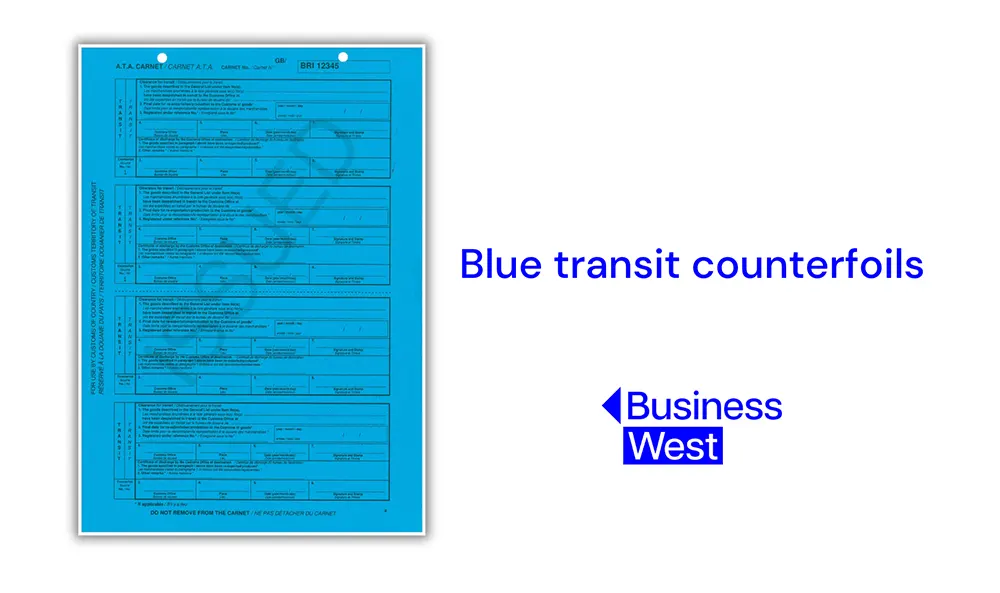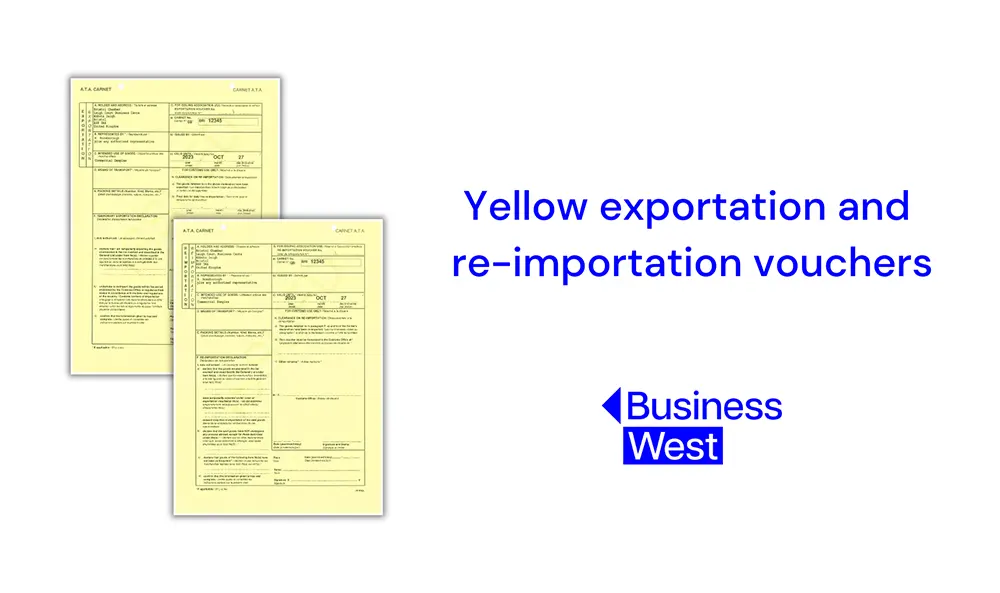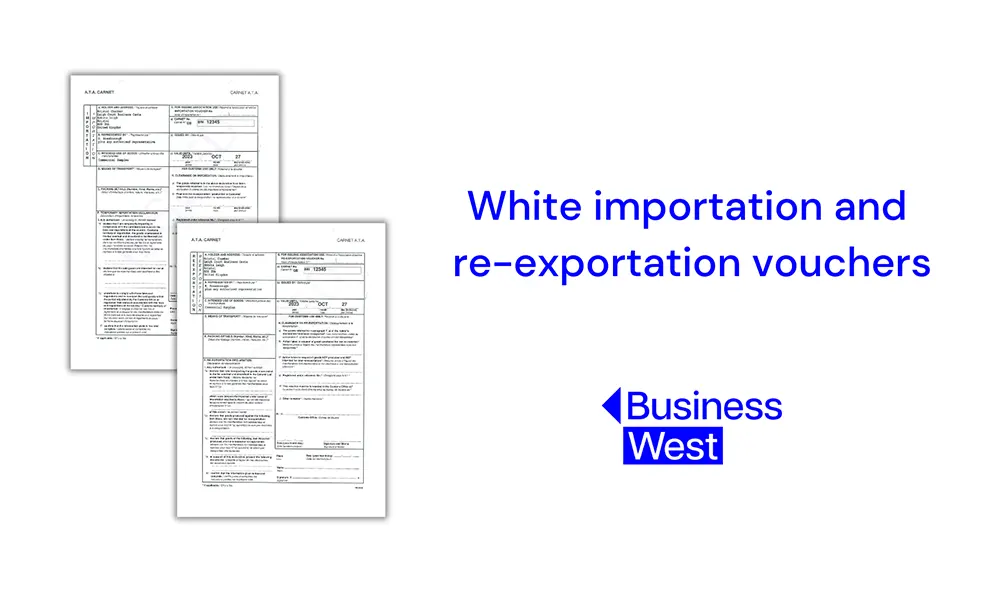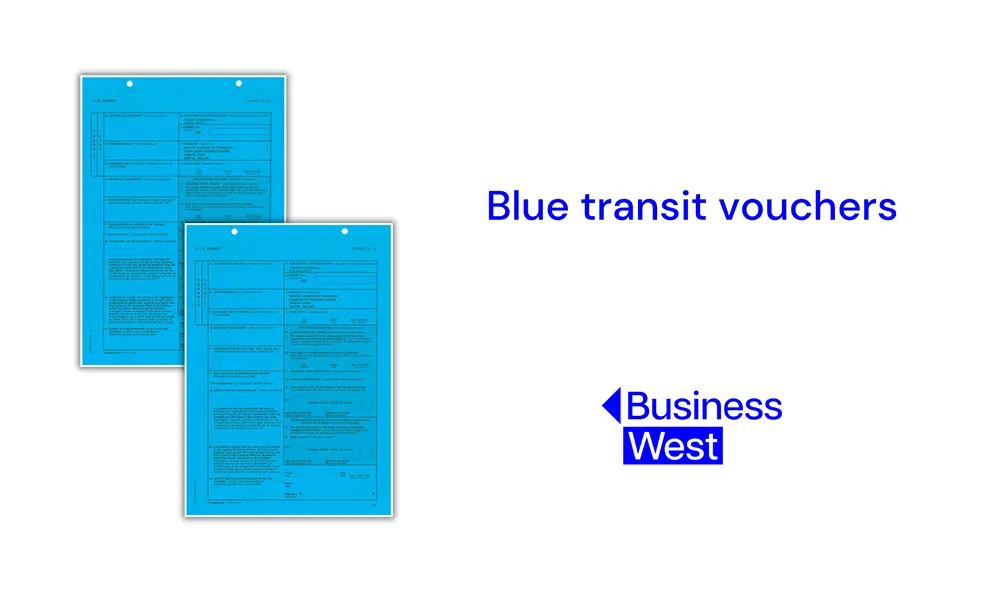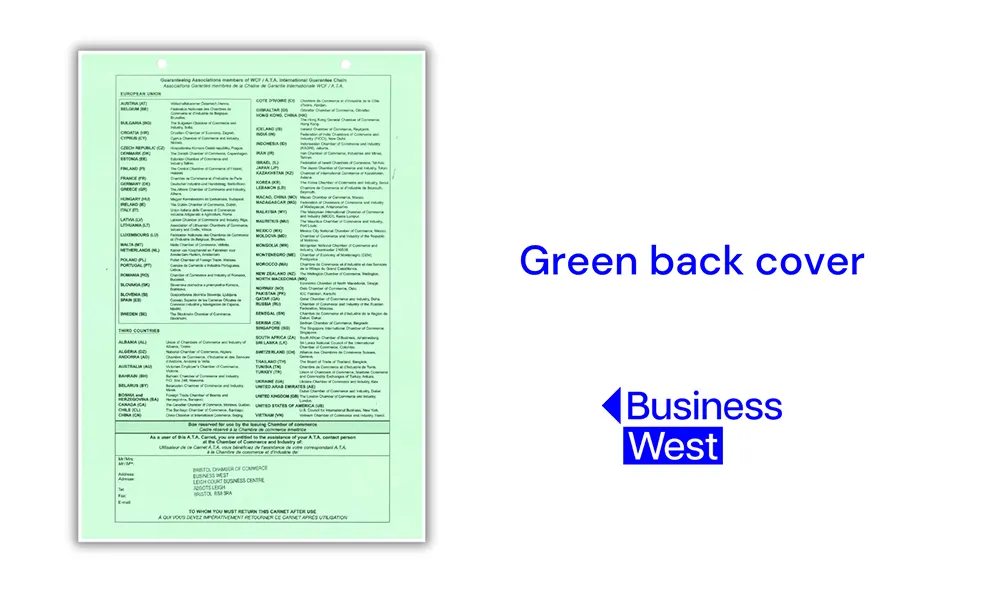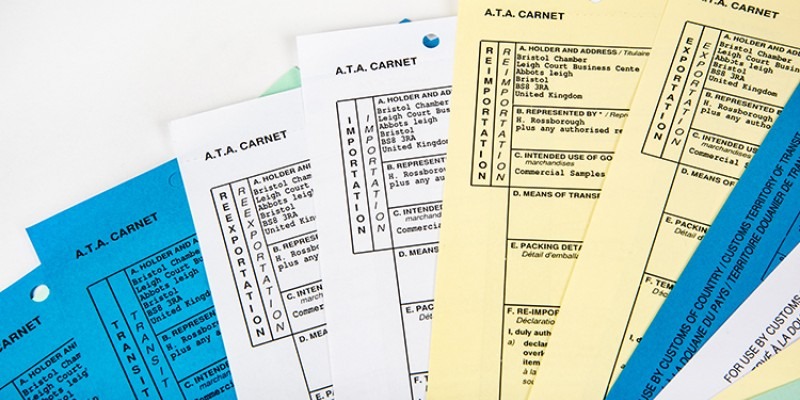
What is a Carnet?
A Carnet is a physical customs document which acts as a 'passport for goods’. It aids the temporary movement of goods out of the UK and into other countries on the ATA Carnet scheme.
What does a Carnet document look like?
A Carnet is made up of lots of different coloured sheets of paper. At first they might confuse you, but once you start using Carnets regularly, they will start to make sense.
One full Carnet is comprised of:
- The ‘To Whom’ letter
- The green front cover
- The general list
- The yellow exportation and re-importation counterfoils
- The white importation and re-exportation counterfoils
- The blue transit counterfoils
- The yellow exportation and re-importation vouchers
- The white importation and re-exportation vouchers
- The blue transit vouchers
- The green back cover
Here, we will take you through the purpose of each Carnet page and how it should be used.
The ‘To Whom’ letter
The ‘To Whom’ letter is attached to the front cover of the Carnet.
It is a white piece of paper which displays the holder company name and logo. It is a crucial document which allows the holder to give permission to additional Carnet representatives.
For example, if the holder is using a haulier or freight forwarder to transport their goods and Carnet, they may not know the name of the driver/drivers when they are applying for the Carnet. For the driver to be given permission to handle the Carnet, their name can be added to the ‘To Whom’ letter once the application has been completed and the ATA Carnet has been received. Essentially, it means that permission can be given to drivers when the Carnet is already on the road.
The ‘To Whom’ letter must be signed by the director of the holder company.
The Carnet front cover
The front cover of your ATA Carnet should look like this:
It details all the important holder and goods information.
This includes:
- Holder name and address in Box A
- Carnet representatives' names in Box B
- The intended use of goods in Box C
- Destination countries in Box P
- Holder signature in Box J
- Customs’ validation in Box H
You MUST NOT take the Carnet into any countries which are not listed in Box P. If you want to go to an additional country which is not listed on your Carnet, you must get in touch with the Carnet team immediately.
You must make sure that the director of the holder company signs in Box J.
You must make sure that customs validate the Carnet in Box H.
The Carnet general list
The general list is either printed on the back of the front cover (as seen below)...
… or it is attached to the Carnet front cover as an addendum.
The general list is a full list of all the equipment you are planning to temporarily export out of the UK and into another country. It must be detailed and comprehensive, as it is customs’ main reference when they are checking your goods.
The Carnet counterfoils
The counterfoils are your record of customs validation – so it is imperative that you use them correctly and keep hold of them. They are the pieces of card which come after the front cover and list.
The yellow pieces of card are the exportation and re-importation counterfoils:
These are for use in the UK only. UK customs (Border Force) need to sign and validate both the exportation and re-importation boxes. Each box corresponds with a voucher which Border Force will take and use for their records.
If the re-importation boxes are not correctly validated, the holder has no evidence that goods listed on the Carnet have been returned to the UK. Therefore, the holder is left open to claims from overseas customs and will need to obtain a Certificate of Location to prove that the goods have been brought back home.
The white pieces of card are the importation and re-exportation counterfoils:
These are for use in non-UK countries – i.e. the Carnet destination countries. Foreign customs need to sign and validate the importation and re-exportation boxes. Each box corresponds with a voucher which customs will take and use for their own records.
If the re-exportation boxes are not correctly validated, the holder has no evidence that the goods have left the country. Therefore, the holder could be at risk of receiving a fine from overseas customs.
And finally, the blue pieces of card are the transit counterfoils:
The transit counterfoils are only to be used in countries/customs territories which you are only passing through – i.e. NOT stopping in. Therefore, a lot of Carnet customers don’t actually end up using them. They are most commonly used when moving from one EU territory to another via Switzerland.
Read our blogpost about how to use Carnets in the EU for more information on transit counterfoils and vouchers.
The Carnet vouchers
The Carnet vouchers are customs’ record of customs validation. Customs officers will fill in and then remove the vouchers from your Carnet when they inspect your goods.
Before you get your Carnet stamped by customs, you must fill in Section F of the relevant voucher.
The yellow pieces of paper are the exportation and re-importation vouchers:
These are for use by UK customs (Border Force) only.
The white pieces of paper are the importation and re-exportation vouchers:
These are for use by foreign customs only.
And the blue pieces of paper are the transit vouchers:
These, like the transit counterfoils, are only for use when you are transiting through (i.e. not stopping in) a customs territory.
The Carnet back cover
The back cover of the Carnet lists all the countries on the ATA Carnet scheme, notes on how to use the Carnet, and most importantly, the Carnet return address.
Once the Carnet has expired, it must be returned to:
Bristol Chamber of Commerce
Business West
Leigh Court Business Centre
Abbots Leigh
Bristol
BS8 3RA
For more Carnet advice, visit our blog or get in touch with the Carnet team.
- Log in to post comments
Apply for an ATA Carnet today
Start creating and submitting your ATA Carnets today. To apply for your carnet, you'll be taken to our easy-to-use export documentation platform, eCert.

